
A showcase of inspiration and design
MIAG Artist Series
Do they spin? That’s the No.1 question I’m asked at craft fairs where my best dish flowers are on display. Some people have never seen garden art like this before and are naturally curious.
My sense of humor gets the best of me as I recall the verse about the lilies of the field, “They toil not nor do they spin” (Matthew 6:28 KJV) Considering the weight of glass and ceramic dishes–even with specialty hardware that would allow it to rotate–there’s no sail or paddle to catch the wind. Dish flowers are stationary sculpture, not whirly gigs.
Traditional favorites

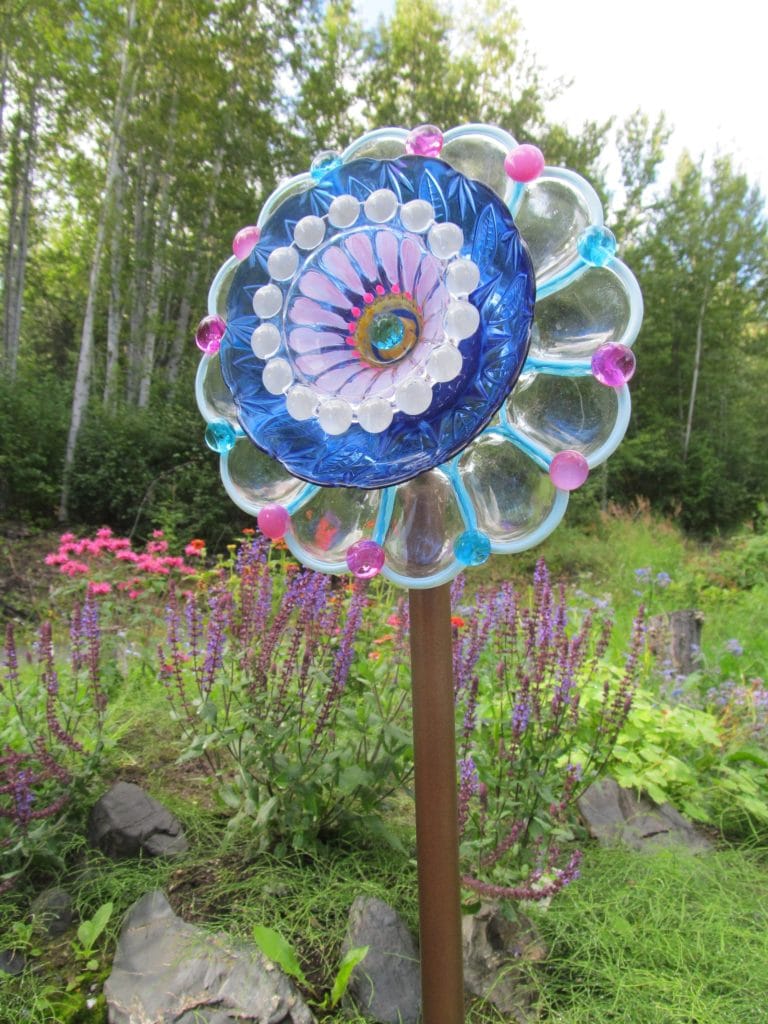
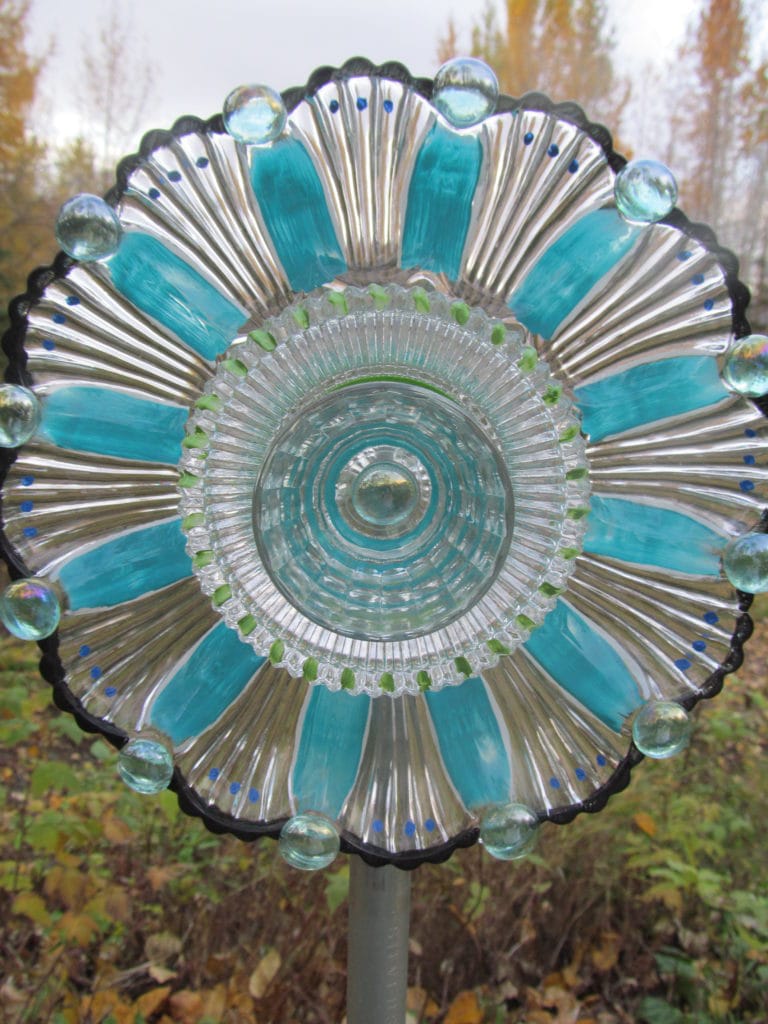
The heart & soul behind the best dish flowers
You may have heard that some artists form emotional attachments to their work. For me, that would be true. Not every piece, but there have been a few I was quite fond of that were very hard to part with.
An artist pours so much of themselves into their creations. There’s considerable energy that goes into every little nuance. I’m always thinking, ‘what would make this piece special?’ Or ‘what would make this one stand out?’
It can be frustrating. For example, I can start out painting on a glass dish intending for it to go in a certain direction, and end up not liking it. So, I wash it off and start over again. Sometimes, I’m not exactly sure what I’m after when nothing seems to be working.

A peak into the design process
In trying to make the best dish flowers that I possibly can, there are obstacles to work around. For instance, glass and ceramic dishware is notorious for its imperfections. A wonky plate or bowl is one that is not level on the bottom, or has a little wave or curve in it. Then, it won’t fit well surface to surface with another dish. Sometimes I can make it work. Other times, ‘making it work’ compromises another element of the design.
Another issue is that some glass dishes have a rim on the bottom while others are flat. You wouldn’t think that would make a difference, but it does. In order to make that plate stand out from the one behind it, I have to use another, smaller dish as a spacer between them. That gives it kind of a 3-D effect. Those things aside, it could be a few hours to a few days of experimenting with different combinations of color, shape and texture that will give distinct personality to the finished product.
Every single art work is an original which makes what I do a little harder. That’s simply the way it is when you have to scrounge up your materials. Just because I get them at a thrift store, doesn’t mean that I breeze in and 20 minutes later breeze back out with everything I need. Most of the materials for my best dish flowers come from different places on different days a few weeks or even months apart. As time consuming as that may be, it offers the greatest opportunities to stretch the imagination. Which in turn has challenges of its own.
Embracing risk
I simply love to play around with things, and push myself creatively. A few years ago, I began to experiment by picking up plates that presented more difficult or unique patterns. Artists take a bit of a risk whenever they attempt something new. Ever so gradually, I began to introduce more unconventional designs.
Avant Garde designs make best dish flowers


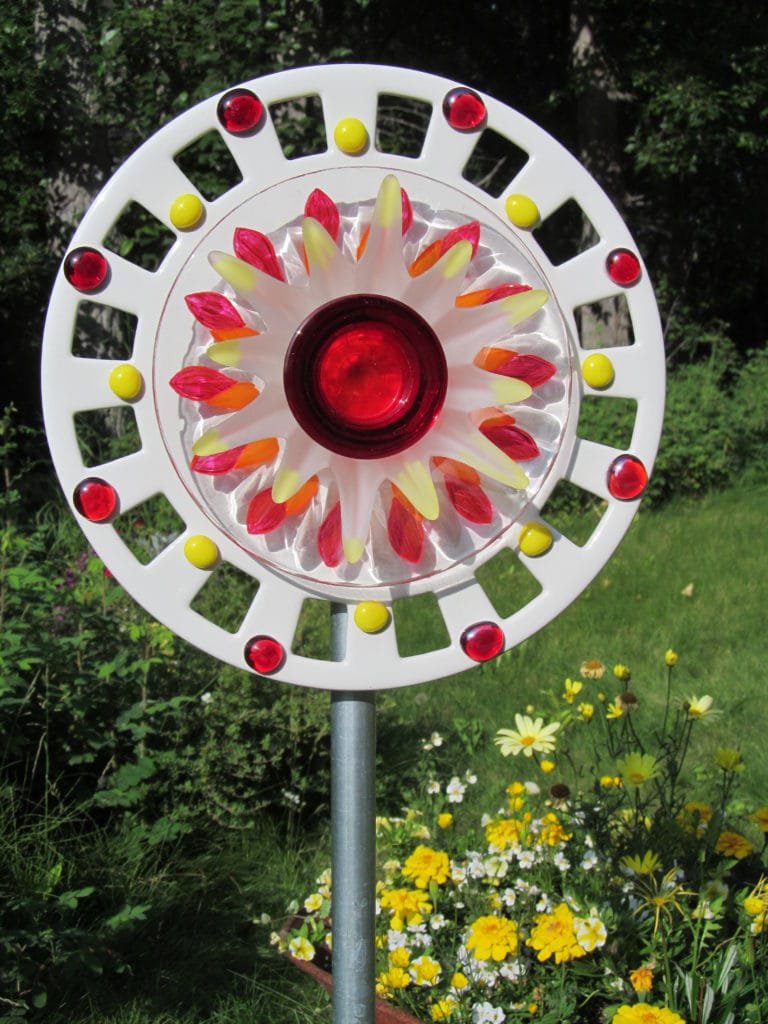
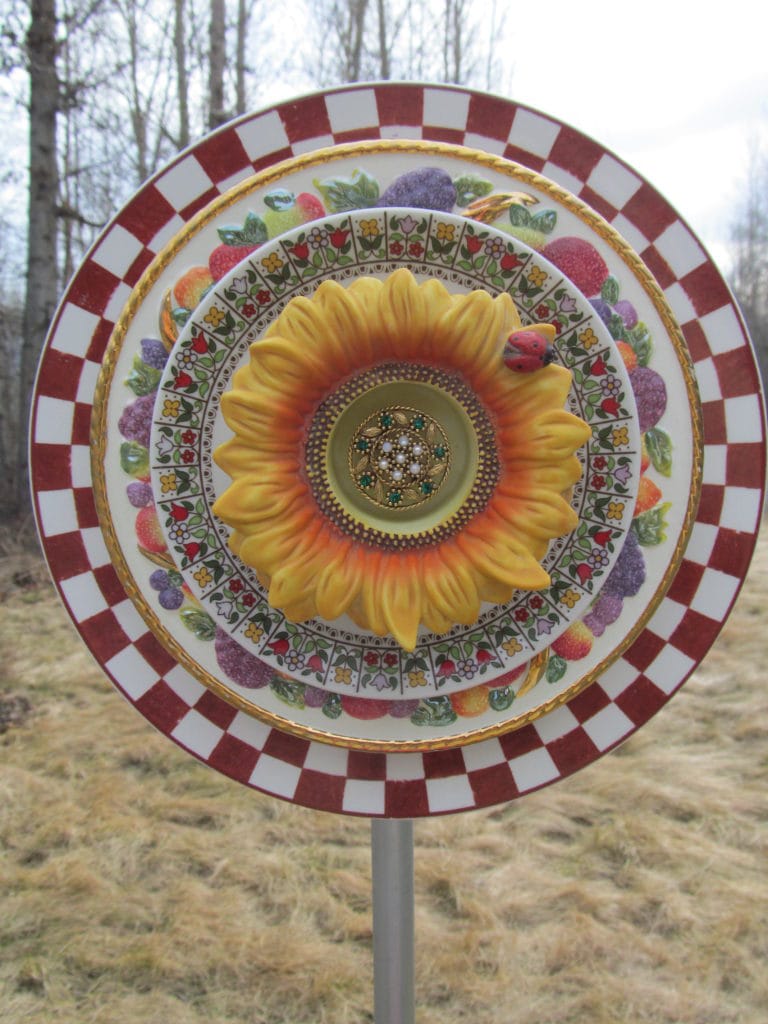
Best dish flowers inspired by nature
Some of my favorite dish flower designs are based on a real, actual flower.
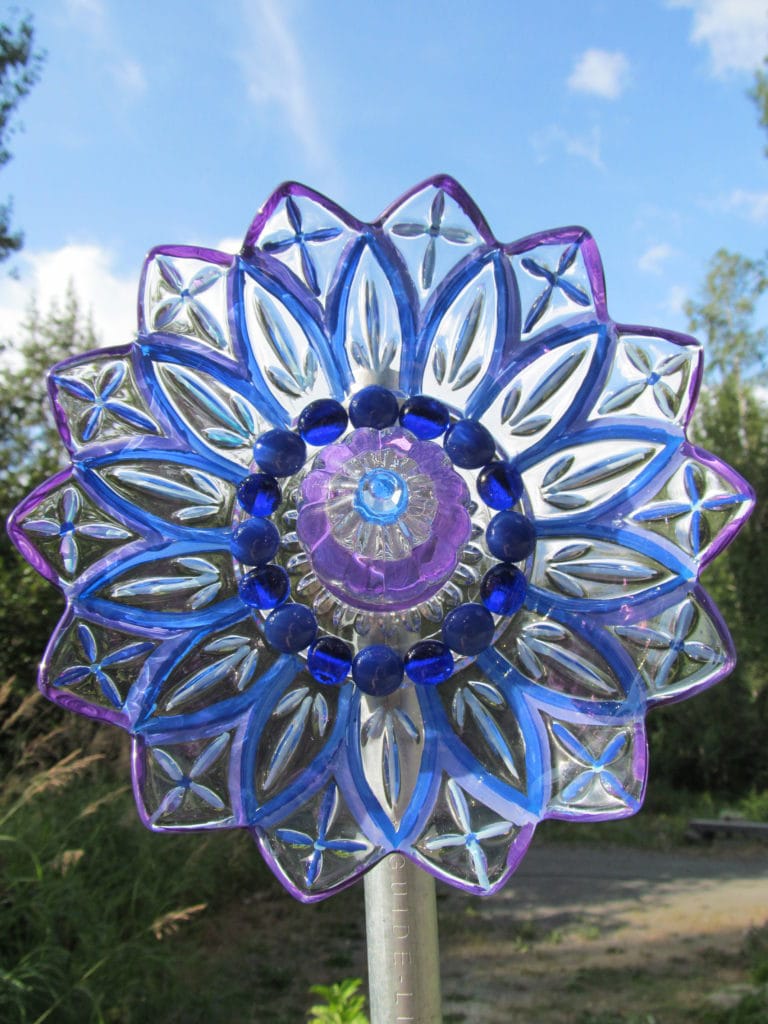

Siberian Aster (wildflower that grows in my area)


Poppy


Bird of Paradise

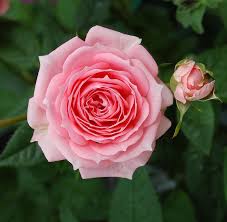
Rose


Sunflower

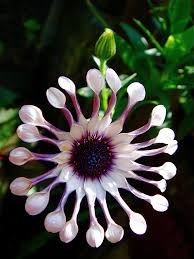
Osteospermum (African Daisy)
Best ceramic dish flowers from funky plates




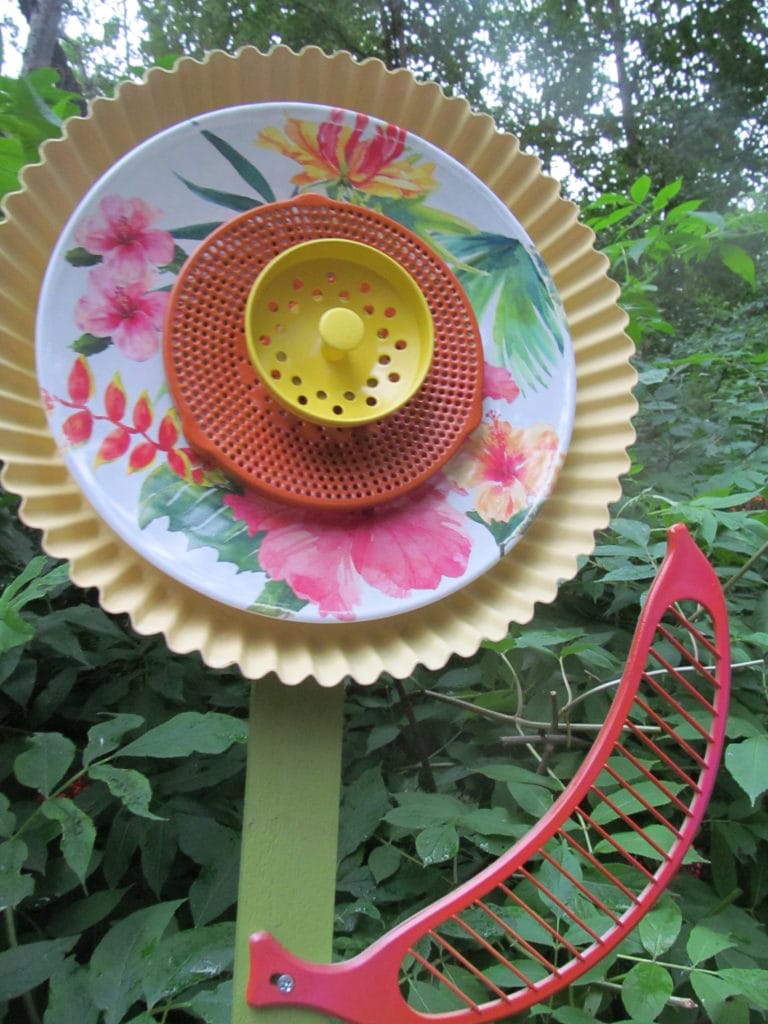
Assembly method for my best dish flowers
People always want to know how I attach my plates. There are many ways to attach a dish flower to its post. It boils down to the personal preference of the artist. I decided on the drilling method. The rear plate is attached to a metal post with a machine screw and fastening nut. The flower head can be removed from the post for storage over the winter season.
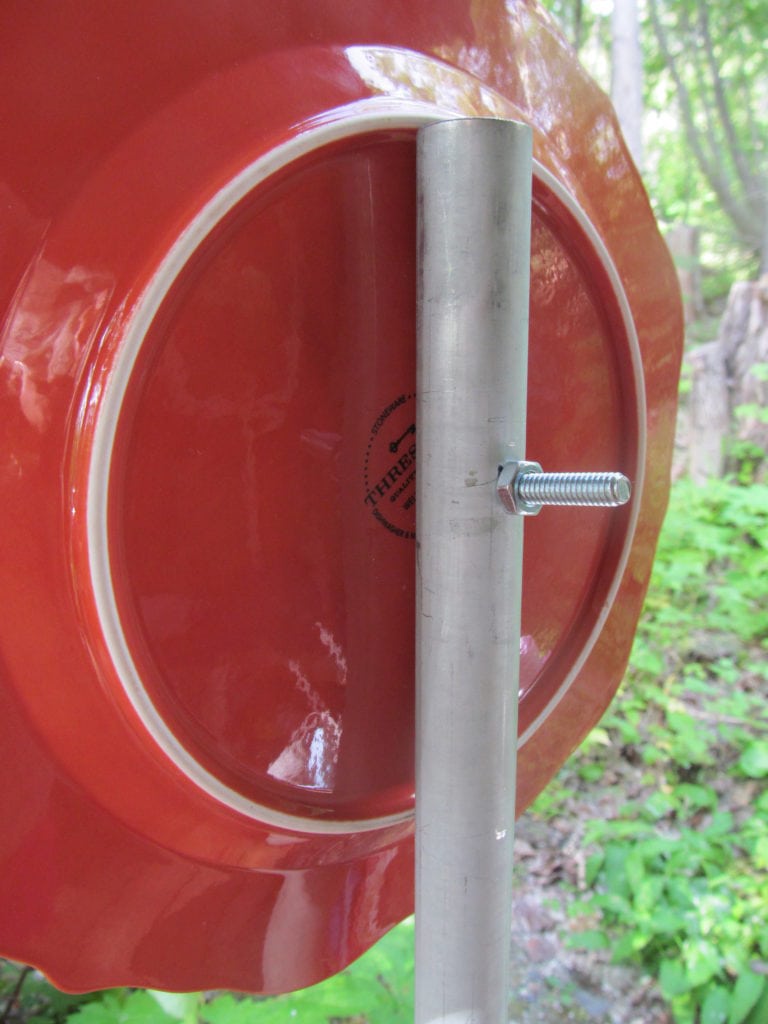
How is it possible to drill a plate without breaking it? When I first started making dish flowers, I had the same question. The word “drill” doesn’t exactly conjure up the right image. A more accurate word is “grinding”. I use a diamond tip drill bit that slowly grinds a hole through the plate. Depending on how the plate is made (glass or stoneware or porcelain) it takes anywhere from 5-20 minutes to drill a hole through a glass or ceramic dish.

The drill tip gets hot as it makes contact with the plate. Therefore,to keep the drill tip cool, the plate must be drilled under a little bit of water. That way, the plate doesn’t shatter. I do this in my kitchen sink. When the plate is turned upside down, it’s like a dome. There’s space underneath it. That way, when the drill bit goes thru the plate, I won’t damage the sink.
Because the back side is always facing up, I become quite familiar with the manufacturer. I’m always staring at a name like “Gibson” or “Anchor Hocking” while I’m drilling. It gets me interested in the story behind the plate.
DON’T FORGET YOUR FREEBIE! Scroll down below to receive your special garden decor tips and be part of the Make it a Garden Community!
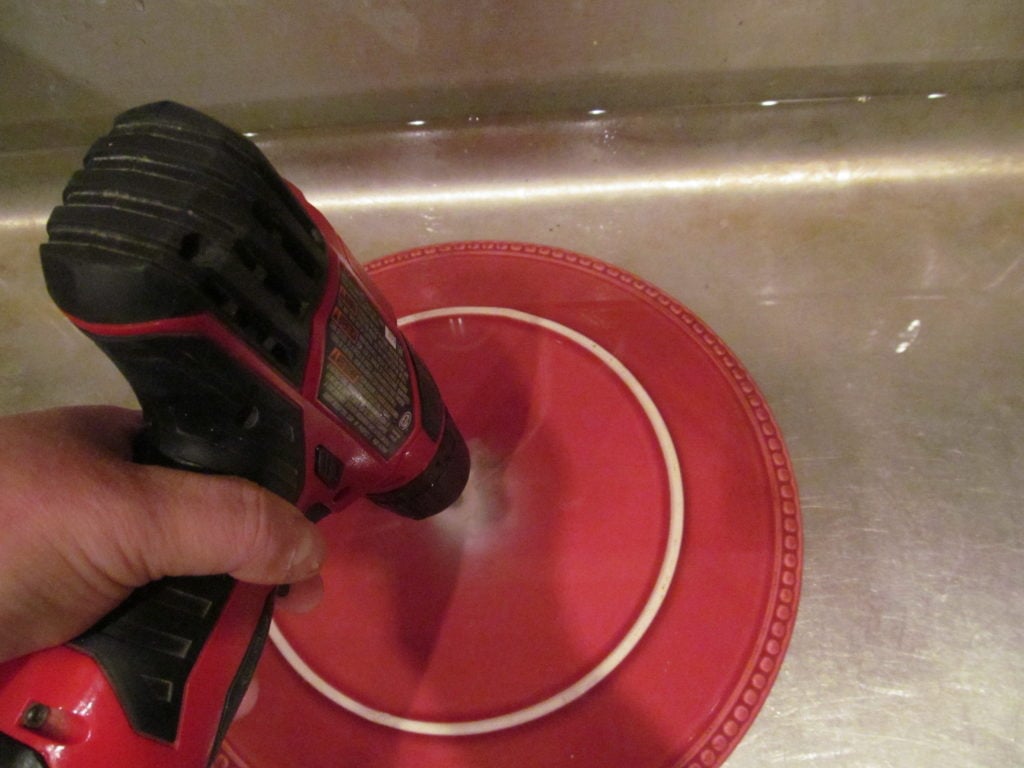
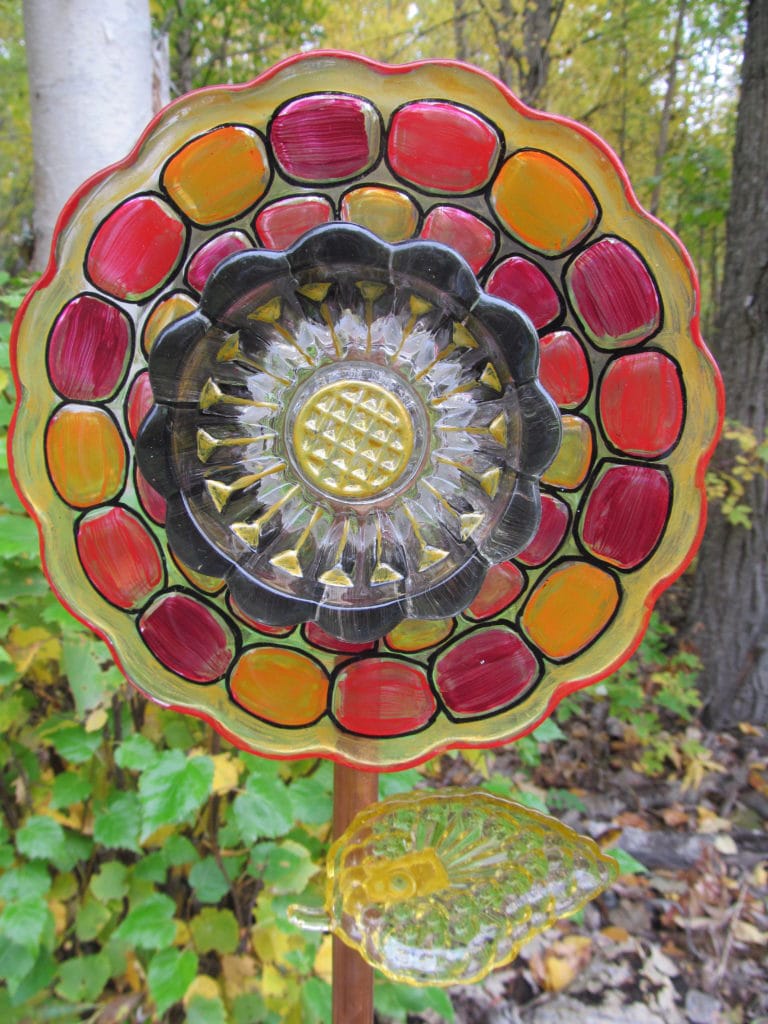
Conclusion
If you’ve enjoyed this article or have questions about the art, please be sure to leave a comment or use the “contact me” form to get in touch. I’d love to hear from you! Follow me on Facebook and please tell a friend about Make It A Garden.
ARTIST FOCUS: Do you know someone who creates amazing garden art, sculpture or outdoor furniture? Make it a Garden exists to promote artists and help readers of this blog connect with craftsmen who produce the unique and specialized works they’re seeking for their yard or garden. If you, or someone you know would like to be considered for this blog, please get in touch by using the contact form above.
More from our Artist Spotlight Series
“The Fairy Artist Who’ll Make You Believe” (UK’s Robin Wight)
Bicycle in the Arts: a cyclist shares her Whimsical Bicycle-inspired Garden Art
The form you have selected does not exist.
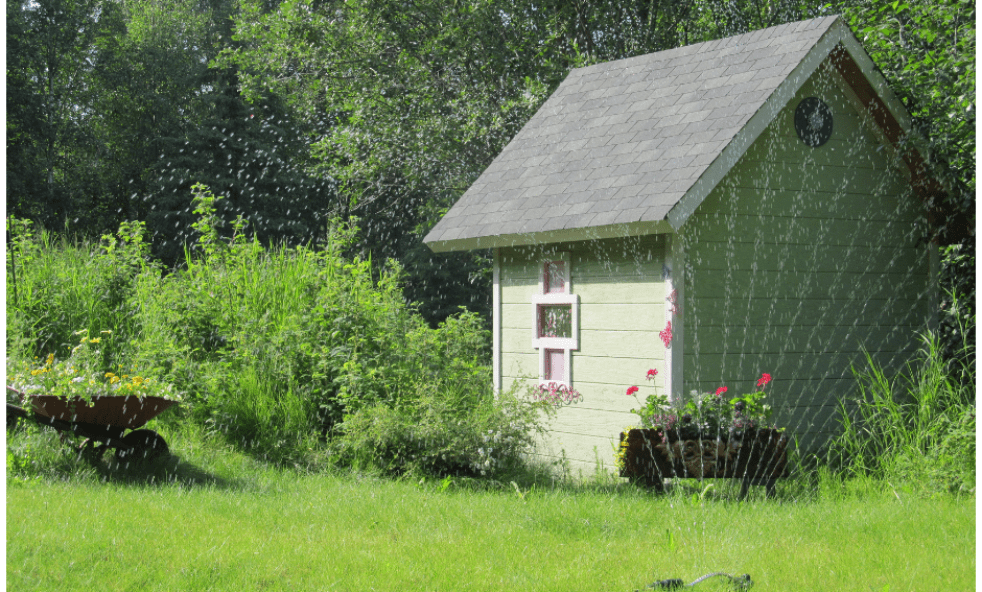
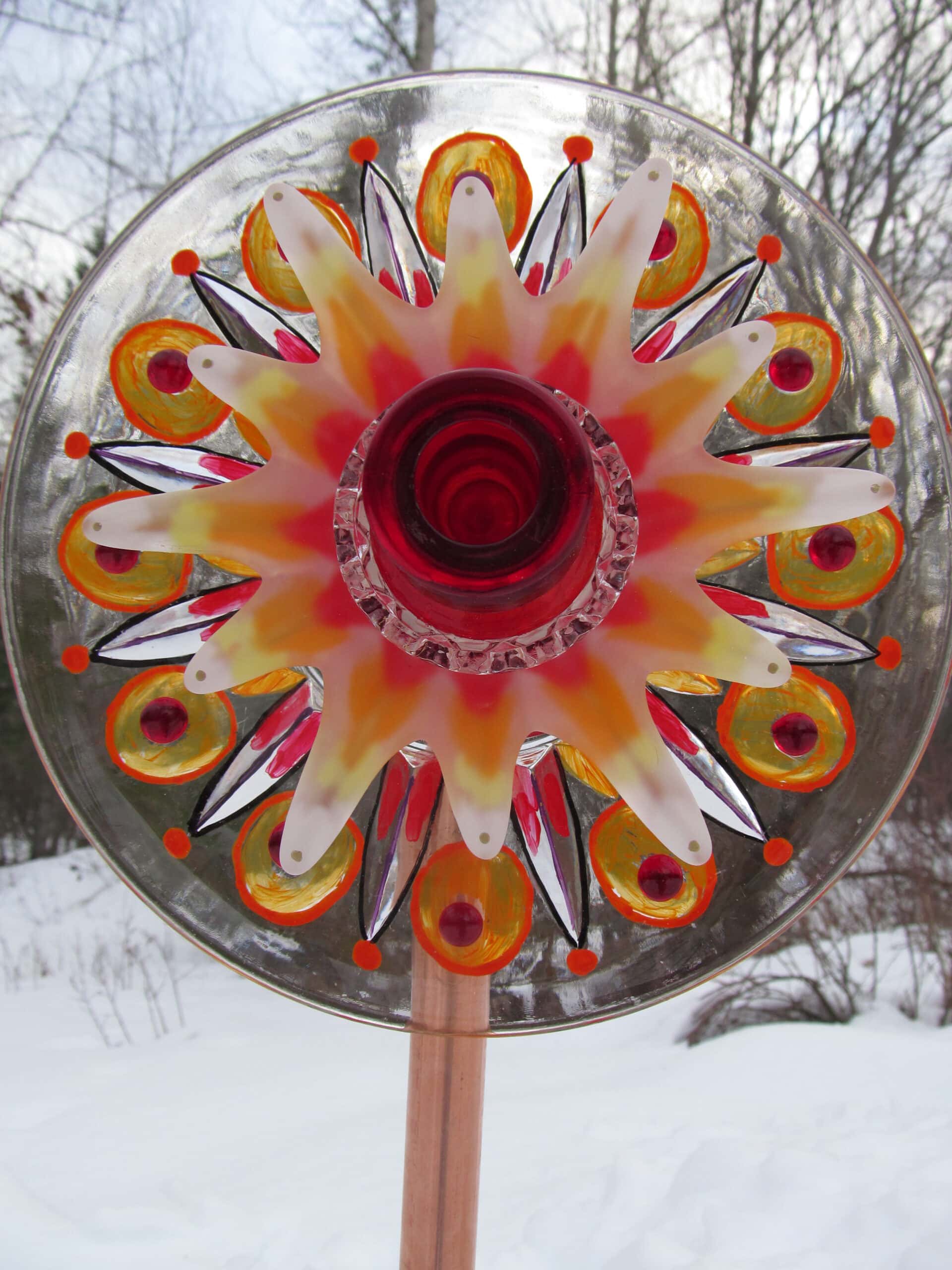
Absolutely love your unique creations. I have just started making such creations myself and found your comments reflect my findings. I learn something new every time I spend time on the craft. Maybe I will go on learning for a very long time.
I would love to be part of your group.
Thanks so much for the feedback, Leonie! Like anything, crafting is always a journey of learning and growing. I certainly did not start with the dish flowers I make now. In fact, in all honesty, I was afraid to learn how to drill glass! So for the 1st year, all my dish flowers were the plastic kind. They were still cute…but my desire to make ones like the ones I had seen (and fallen in love with) on Pinterest, meant overcoming intimidation, researching how to do it and what drill tips to use. But that only stimulates the imagination, and uses part of the brain we don’t always use. I had to learn which types of glass plates are sturdy enough to drill and which types will shatter. I learned how to use color and style…since most dishware is art in and of itself. So keep on creating and crafting and learning and growing. That’s part of the fun! ~ Kristen
Where do you get the different dishes for your creations?
I find most of my dishes at my local thrift store. Sometimes at garage sales and once in awhile, someone gives me dishes they want to get rid of.